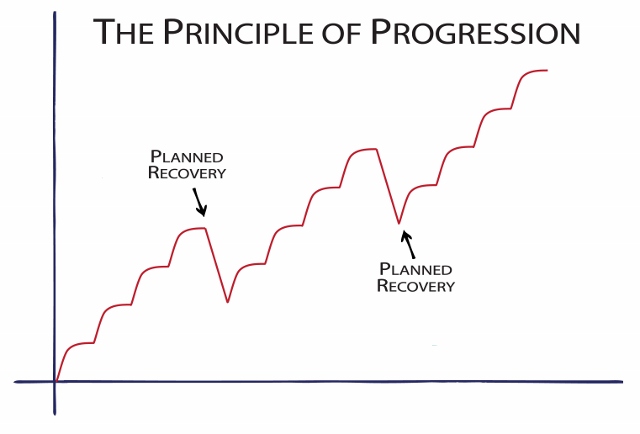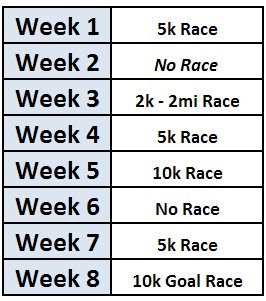Are you making these TOP mistakes that I see over and over again?
Today I’ll show you how to fix them and start achieving more with your running – more PR’s, more weight loss, more consistency, and more injury-free running.

So a few weeks ago I got a reply to one of the subscriber-only articles (more running advice is published via email than here on the blog – get on the private list here) that I send my readers.
Andrew had a great idea for a new article. He told me:
Hey Jason, love your emails, articles, and other means of support.
I had an idea for an article called “Are you minimizing your results?” It would explain all the ways we’re actually limiting the return we could be getting on our workouts, like lack of a plan, excessive working out, lack of challenging workouts, racing too much, etc.
I just wanted to pass the idea along – thanks for all your running wisdom and encouragement!
Andrew brings up a really good point. It got me thinking – are there common running mistakes that a lot of people make? The answer, of course, is YES!
Over the last three years of coaching runners, I’ve reviewed hundreds of runner questionnaires. This is the exhaustive list of questions that allows me to dig deep into a runner’s background, injury profile, fitness level, schedule, racing history, and other aspects of their running career so I can tailor their training exactly to their own personal needs.
And after hundreds of hours of reading through this information – close to 10,000 data points! – a lot of common themes emerge. In fact, I can boil them down to five popular mistakes that minimize the results of your hard work.
All of us have big goals to finally get healthy, run more consistently, and set new personal bests. But unfortunately, the majority are short-changing themselves by making silly mistakes.
Today I’ll show you the solutions to the mistakes in your training, so you can get on with the business of achieving more.
Mistake #1: I have no idea what to do, my plan is all over the place!
This mistake takes a few different forms:
I would start one generic training plan I found online or in a magazine and then switch to another and then another. I wasn’t a hundred percent confident that the plan was right for me, so I would choose a different one. Obviously bouncing from one plan to another is going to give you bad results.
I wish I knew what my biggest struggle is – I have no idea what will help me and find myself trying to figure all this out on my own and it’s hard.
My ‘plan’ is cobbled together from various sources I’ve found online, but I’ve never been an active person and know next to nothing about running.
These are real struggles from real runners who have shared their problems with me. They echo Andrew’s acknowledgement that lack of a plan is a big problem.
How many of you have hopped from one random workout to another that you saw in some magazine or some other runner do? New workouts make us feel all warm and fuzzy inside. They’re new! Exciting! Sexy!
But they lack consistency and progression. The workout itself isn’t what’s important – it’s the order of workouts throughout an entire season that makes a real difference on race day.
So when you have no plan or create a patchwork of arbitrary workouts that aren’t appropriate for you and don’t lead to where you want to go, you’ll fail.
What’s the solution? Get a plan! Whether you get a fully personalized, custom training plan from me or use one from a book (I recommend Brain Training or Run Faster), understand that consistency is the secret sauce in training.
Bottom line: Consistently run a good progression of workouts that are appropriate to your fitness level and goals and you’ll succeed.
Mistake #2: I just go out and run a few times a week
If you’re just running for fun or general fitness, then great! All you need are 3-4 runs of about 30 minutes to get most of running’s benefits.
But do you want to run a certain time in a 5k, half marathon, or 10k?
Do you want to run your first marathon?
Now your goals aren’t just about health – they’re about performance. You’re not running anymore, you’re training.
Runners who never do any faster workouts will hit a plateau and get stuck in a rut with the same race times. The injury risk is also higher because running the same pace is awfully repetitive.
Instead of not keeping track of your runs, or just going out to run a few miles every few days, or doing untimed “slow and steady” runs, it’s time to introduce a more structured weekly workout.
When I talk to runners about why they don’t do any faster workouts, I hear a lot of confused questions:
Aren’t fast workouts just for, you know, fast runners?
I have no idea what to do – just run fast the entire time?
Do I need a track? Or hills? Help!
The answer to all of these questions is no. There’s a million and one (trust me, I counted) ways of labeling a faster, structured workout so for our purposes we’re just going to call them “workouts.” They could be tempo runs, VO2 Max intervals, speed development, fartleks, hill repetitions, etc.
The first step is to determine your goal race and then create a progression of workouts that build on your current fitness. The goal is to have them lead to race-specificity so that when you race, the demands of the distance and pace aren’t a surprise to your body.
Use support paces that (you guessed it!) support your race pace throughout your workouts. For beginners, it’s best to stick with simpler workouts like fartleks. An exaple is 8×1 minutes at your 10k race pace with two minutes of easy running in between.
As long as you’re physically prepared for that level of workout and it ultimately leads to the fitness you need for your race, it will help you reach your goals.
Then on race day, you’ll feel stronger and be much better prepared to set a new personal best.
Mistake #3: Uh, I have to do strength exercises?
This is a classic mistake that’s common among the vast majority of runners. Ask yourself, do I complete a regular strength program every week?
If not, it’s probably one of the major reasons you’re chronically injured with aches and pains that always derail your training. While the topic of “injury prevention” includes a LOT more than just strength exercises, it’s a big part of the puzzle.
When your your ability to run long and fast outpaces your ability to withstand the stress of running long and fast, you’ll inevitably get hurt. It’s the classic Engine vs. Chassis analogy where you can’t drop a Ferrari engine into a Geo Prizm frame – all that power will tear the car apart!
Injury prevention isn’t the only reason to get strong. Strength exercises help you become more efficient (so you use less energy when running) and the right kind of lifting can help you run faster.
For more on that type of lifting, see how I got 50% stronger while losing 3% body weight.
This horse has long been beaten to a bloody pulp on SR, so I won’t go on about it. For 30+ more perspectives on strength work for runners, see the Strength Workouts page.
Mistake #4: But I don’t want to rest!
We’re runners – we love to run. Some of us run every day and race a lot. Taking time off seems counter-intuitive – won’t that make you slower and out of shape?
In a word, no! Time off from running can be incredibly therapeutic, especially when it’s planned. It all fits into the Principle of Progression:

Planned recovery is most useful after a difficult race like a marathon, when the damage goes far beyond muscular. Yes, your muscles experience microscopic tears (that’s what makes you sore) but in a few days all that will heal. And you’re ready to run… right?
Nope. For most runners, 3-5 days is not enough time to recover after a marathon or ultra even if their legs aren’t sore anymore. That’s because the damage extends to your central nervous system and endocrine system, which regulates your hormones.
One example is that men’s testosterone levels take a beating after a marathon. Personally, I’d like to get my T levels back to normal after such an effort.
Recovery also helps you adapt to your training. It happens during the day when you’re at work and not running. And at night when you’re sleeping. And also when you take a day off and don’t run a step.
Those are micro examples of recovery. On a larger scale though, you need a more prolonged recovery period to ensure your body heals itself from the trauma of long-term training. Respect that cycle.
Use this handy table to estimate the amount of time you need after a goal race:

The flip side to this topic is that some runners rest too much. For the majority of folks, 2-3 weeks is the maximum amount of time that you should take off from running after a marathon.
Mistake #5: “I have 9 marathons planned this year.”
I LOVE the enthusiasm that runners bring to their training when they want to get out and race every weekend.
But over-enthusiasm can be destructive. If your goal is to maximize performance – or run as fast as you can – you have to be strategic about planning your race schedule. Here are three rules that I use with the runners I coach to help them train smarter.
Rule #1: Focus 2-3 months of running on just training with no races. Often called the base phase of training, this sets up the fitness foundation that the rest of your race season will rest on.
Rule #2: If you run two marathons in a year, don’t run more than one in the next year. Marathons are really stressful and focusing on two of them (or more…) every year is a sure way to get stale.
Rule #3: If you have a series of races planned for a particular time period, make the last race in the series your goal race. Then take planned time off from running afterward (see the recovery section above).
To the right is a sample race season that you can adapt to your personal schedule. Notice the principles at play here: only one race per week, an occasional week off from racing, and never scheduling two 10k’s during back to back weeks.
It’s seems simple right? But how many of us are this strategic – and how many of us set PR after PR?
Can I Help You Train Smarter?
Helping you plan smarter training is what gets me out of bed in the morning and excited to continue coaching for a living.
I absolutely love my job, even though sometimes I want to smother myself with my dirty running shoes because I see the same mistakes over and over again.
Nevertheless, it’s a pure joy. If you have any questions about common running mistakes and how you can upgrade your training, leave a comment below or shoot me an email.
As long as it’s not super specific (requiring one of those questionnaires I mentioned earlier), I’m happy to help you get on the right track. But if you want to take your running to the next level, I’d love to help you out with a complete training plan for your upcoming goal race.
Train smart, race faster!